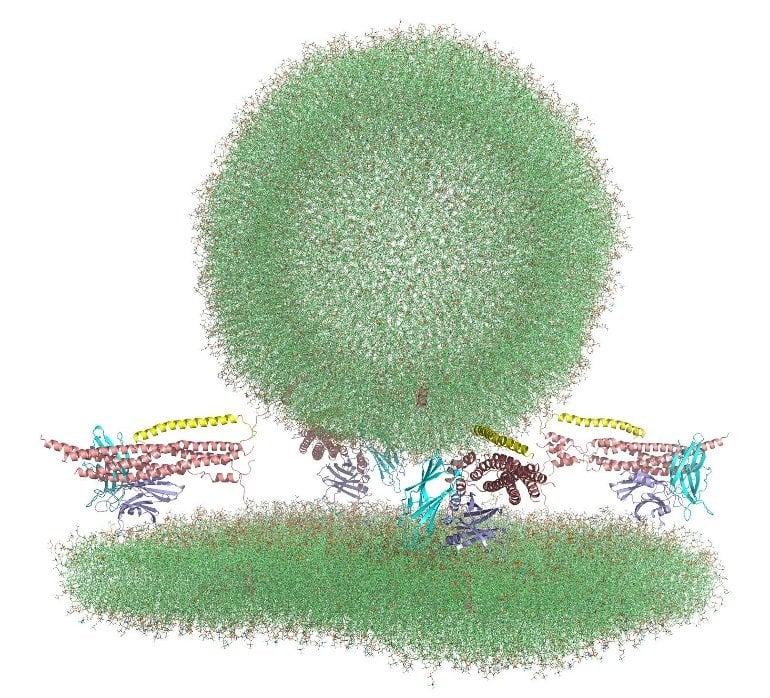Some of your synapses aren't working properly post stroke. What is your doctor doing to fix them? This is your doctor's responsibility to solve, don't let her/him weasel out of that responsibility.
Using a Supercomputer to Understand Synaptic Transmission
Summary: Researchers present an all-atom molecular dynamic simulation of synaptic vesicle fusion.
Source: Texas Advanced Computing Center
Let’s think for a second about thought—specifically, the physics of neurons in the brain.
This topic has been the lifelong interest of Jose Rizo-Rey, professor of Biophysics at the University of Texas Southwestern Medical Center.
Our brains have billions of nerve cells or neurons, and each neuron has thousands of connections to other neurons. The calibrated interactions of these neurons is what thoughts are made of, whether the explicit kind—a distant memory surfacing—or the taken-for-granted kind—our peripheral awareness of our surroundings as we move through the world.
“The brain is an amazing network of communications,” said Rizo-Rey. “When a cell gets excited by electrical signals, very fast synaptic vesicle fusion occurs. The neurotransmitters come out of the cell and bind to receptors on the synaptic side. That’s the signal and this process is very fast.”
How exactly these signals can occur so fast—less than 60 microseconds or millionths of a second—is the focus of intense study. So is the dysregulation of this process in neurons, which causes a host of neurological conditions, from Alzheimer’s to Parkinson’s disease.
Decades of research has led to a thorough understanding of the main protein players and the broad strokes of membrane fusion for synaptic transmission. Bernard Katz was awarded the 1970 Nobel Prize in Medicine in part for demonstrating that chemical synaptic transmission consists of a neurotransmitter-filled synaptic vesicle fusing with the plasma membrane at nerve endings and releasing its content into the opposing postsynaptic cell.
And Rizo-Rey’s longtime collaborator, Thomas Südhof, won the Nobel Prize in Medicine in 2013 for his studies of the machinery that mediates neurotransmitter release (many with Rizo-Rey as a co-author).
But Rizo-Rey says his goal is to understand the specific physics of how the activation process of thought occurs in much more detail. “If I can understand that, winning the Nobel Prize would just be a small reward,” he said.
Recently, using the Frontera supercomputer at the Texas Advanced Computing Center (TACC), one of the most powerful systems in the world, Rizo-Rey has been exploring this process, creating a multi-million atom model of the proteins, the membranes, and their environment, and setting them in motion virtually to see what happens, a process known as molecular dynamics.
Writing in eLife in June 2022, Rizo-Rey and collaborators presented all-atom molecular dynamics simulations of synaptic vesicle fusion, providing a glimpse at the primed state. The research shows a system where several specialized proteins are “spring-loaded,” awaiting only the delivery of calcium ions to trigger fusion.

No comments:
Post a Comment